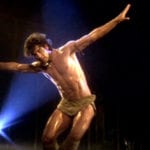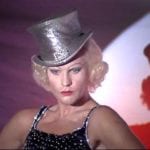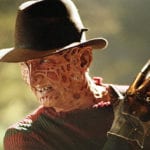 History
History  History
History  Technology
Technology Top 10 Everyday Tech Buzzwords That Hide a Darker Past
 Humans
Humans 10 Everyday Human Behaviors That Are Actually Survival Instincts
 Animals
Animals 10 Animals That Humiliated and Harmed Historical Leaders
 History
History 10 Most Influential Protests in Modern History
 Creepy
Creepy 10 More Representations of Death from Myth, Legend, and Folktale
 Technology
Technology 10 Scientific Breakthroughs of 2025 That’ll Change Everything
 Our World
Our World 10 Ways Icelandic Culture Makes Other Countries Look Boring
 Misconceptions
Misconceptions 10 Common Misconceptions About the Victorian Era
 Mysteries
Mysteries 10 Strange Unexplained Mysteries of 2025
 History
History 10 Things You Didn’t Know About the American National Anthem
 Technology
Technology Top 10 Everyday Tech Buzzwords That Hide a Darker Past
 Humans
Humans 10 Everyday Human Behaviors That Are Actually Survival Instincts
Who's Behind Listverse?

Jamie Frater
Head Editor
Jamie founded Listverse due to an insatiable desire to share fascinating, obscure, and bizarre facts. He has been a guest speaker on numerous national radio and television stations and is a five time published author.
More About Us Animals
Animals 10 Animals That Humiliated and Harmed Historical Leaders
 History
History 10 Most Influential Protests in Modern History
 Creepy
Creepy 10 More Representations of Death from Myth, Legend, and Folktale
 Technology
Technology 10 Scientific Breakthroughs of 2025 That’ll Change Everything
 Our World
Our World 10 Ways Icelandic Culture Makes Other Countries Look Boring
 Misconceptions
Misconceptions 10 Common Misconceptions About the Victorian Era
 Mysteries
Mysteries 10 Strange Unexplained Mysteries of 2025
Top 10 Memorable Blaxploitation Films
Before 1970, black citizens were perceived as train porters, waitresses and shoe-shine boys. This media stereotype was changed with the release of the film Shaft in 1971. The character of detective John Shaft broke the stereotype of a black citizen and the “blaxploitation” genre was born. Common features of the genre include ethnic slurs against whites (honky, womb etc.) and antagonistic white characters such as corrupt cops, gangsters, drug dealers and pimps. Meanwhile, other blaxploitation movies dealt with slavery and were often set in the Wild West; some even recreated classic horror stories with a blaxploitation twist. Typically, blaxploitation films were torn to shreds by critics, though they were usually commercially successful. I have ranked the entries based on popularity and influence.
Memorable Quote: “This is T, Chalky is dead. Now I’m coming to get you’re honky ass.”
Trouble Man follows the exploits of a roguish private detective named “Mr T”, in South Central Los Angeles. T’s arrogant personality causes him to make enemies in both the police and the mob, and he often takes justice into his own hands. Despite being a commercial flop, Trouble Man is notable for its successful soundtrack by Marvin Gaye. Trouble Man combines all the elements of a classic exploitation film – the racist white criminals along with a rebellious black avenger. The trailer is at least very amusing and the perfect introduction to blaxploitation films for those who are unfamiliar with the genre.
Tagline: “Somebody warn the west. Nigger Charley ain’t running no more.”
Probably one of the more rebellious blaxploitation flicks, The Legend of Nigger Charley follows the story of three escaped slaves in the American west. The character of Charley is designed to empower black people in that he is openly opposed to slavery and often seeks revenge on racist white characters. He is representative of a black man’s defiant struggle in a world dominated by racist white folk, proudly proclaiming himself a nigger, despite this being used as an insult against blacks. As the movie comes to a close, Charley and a friend named Toby have just survived a gunfight. Toby asks Charley where they will go now, and Charley replies with the lines: “Don’t matter. Wherever we go there’s trouble waiting for us”. Despite being poorly received by critics, the film was popular and one of the highest grossing movies in 1972. Two sequels followed: The Soul of Nigger Charley and Boss Nigger.
Memorable Quote: “Natural black Jesus is the reverend’s cousin, too. He gives people the strength to kill whites.”
Coonskin follows an African American rabbit, fox and bear that rise to the top of the organized crime racket in Harlem, encountering corrupt law enforcement, con artists and the Mafia. The film attracted controversy because of its alleged racist portrayal of black people. In one scene, a white hit man disguises himself as a monkey and hides a gun in a banjo, in order to attempt a contract killing on a black rabbit. Upon its 1975 release, the film received mixed reviews and was a commercial failure. However, it is memorable in that it is one of the only animated blaxploitation films.
Tagline: “To Stop This Mutha, Takes One Bad Brutha.”
Blackenstein was loosely based on Mary Shelley’s Frankenstein. Released in 1973, it was an attempt to cash in on the success of other blaxploitation horror films that preceded it. The plot revolves around a black Vietnam veteran who undergoes unusual “DNA” surgery to reattach his lost limbs. The surgery goes wrong and a monster similar to Frankenstein is created, who soon goes on a killing rampage. Although memorable for its wacky title and strange content, it fared poorly in comparison to its predecessors. Despite being ripped to pieces by critics, Blackenstein just about broke even at the box office. It is perhaps most famous for being one of the worst and least scary horror movies of all time.
Memorable Quote: “You better put that down before I make you eat it!”
Released in 1973, Cleopatra Jones is a fast-paced action film. It marks a stride forward in a new black female presence in popular action cinema. Cleopatra Jones replaces the traditional white male action hero with a powerful and assertive black heroine. The film was praised by critics and was successful at the box office. A sequel was made in 1975; Cleopatra Jones and the Casino of Gold, though it wasn’t well-received by critics and did not live up to its predecessor’s reputation. A similar blaxploitation flick titled Foxy Brown was released in 1974, and was very popular, despite receiving poor reviews. The character of Foxy Cleopatra from the Austin Powers film series is based on the characters of Foxy Brown and Cleopatra Jones.
Memorable quote: “This is just as much our land as it is yours, and after you hang me… kiss my ass!”
Mandingo is perhaps one of the few big budget exploitation pictures in the history of the film industry, along with Showgirls. The film was based on a novel of the same name written by Kyle Onstott. Mandingo is the name of a slave who is purchased by a wealthy plantation owner. Gradually the plantation owners and slaves begin secret sexual affairs with each other, resulting in a violent and bloody climax. The film tackles slavery and covers a black slave’s views on the personality and intentions of the average white citizen. The film was a substantial box office success, despite receiving borderline terrible reviews from most critics. Not unlike other blaxploitation films, Mandingo was released on DVD in 2008 as a widescreen version.
Tagline: “A monster he cannot control, has taken over his very soul!”
[WARNING: video clip contains partial nudity.] Dr Black, Mr Hyde was loosely inspired by Robert Louis Stevenson’s novel, The Strange Case of Dr Jekyll and Mr Hyde. The film narrates the life of a noteworthy scientist who accidentally creates a serum that turns him into an albino vampire with a mania for killing prostitutes. A side effect of the serum is that it changes skin color from black to white. Upon its 1972 release, the film was well received by critics and a minor success at the box office. Most praised was ex-American Footballer, Bernie Casey, who starred as Dr Henry Pryde. Director Henry Crane has cited that the movie was made to subtly challenge the negative effects of drug addiction
Tagline: “He’s Black. He’s Brutal. He’s Boss.
This immensely popular spaghetti western is the second sequel to The Legend of Nigger Charley, and also happens to be one of this lister’s favorite films of all time. Released in 1975, Boss Nigger tells the story of two black bounty hunters, Boss Nigger and Amos, who hunt a notorious fugitive through a town in the Wild West. Upon discovering the town has no sheriff, Boss Nigger takes over the position, much to the despondency of the town people. The pair raise hell in town, extorting the racist locals and chasing women, all while waiting for the opportunity to get their man. The film’s writer-producer-star was former American Footballer Fred Williamson, whose performance was praised by critics.
Tagline: “The mob wanted Harlem back. They got Shaft up to here!”
In terms of blaxploitation films, Shaft is where it all began. The plotline follows detective John Shaft as he hunts for the kidnapped daughter of a mob boss in Harlem. Shaft was well-received by critics and was a huge box office success. As a result Shaft inspired many other similar films, which led to the blaxploitation craze of the 1970s. Many similarities are noticeable between Dirty Harry (also released in 1971) and Shaft, both of which include a rebellious detective for a protagonist. Due to Shaft’s massive box office success, numerous sequels were made: Shaft’s Big Score and Shaft in Africa. In 2000, a third sequel was made starring Samuel L Jackson in the lead role as Shaft’s nephew.
Tagline: “He’s Dracula’s soul brother! Deadlier even than he. “
Perhaps one of the most bizarre horror films of all time, Blacula was the inspiration behind other black exploitation horrors such as Blackenstein and Dr Black, Mr Hyde, though overall no other blaxploitation film matched Blacula’s popularity. The film was incredibly successful at the box office upon its release, in 1972. The story follows an African prince who visits Transylvania and is transformed into a vampire by none other than Dracula himself. He is sealed in a coffin and transported to America where he embarks on a blood-sucking rampage. Blacula ended up with the first ever Saturn Award for Best Horror Movie. Due to the films relative success, a sequel was released in 1973 titled Scream Blacula, Scream!
Memorable Quote: “If Butch goes to Indo-China, I want a nigger waiting in a bowl o’ rice, ready to pop a cap in his ass.”
Although not strictly a blaxploitation film, Quentin Tarantino was heavily inspired by the genre when developing the characters of Jules Winnfield and Marsellus Wallace, in Pulp Fiction. The dialogue of these characters in many scenes is exploited as a source of humor and enjoyment for the audience. Tarantino also produced a more direct homage to the blaxploitation genre with the movie Jackie Brown, though Pulp Fiction was more critically and commercially successful.








